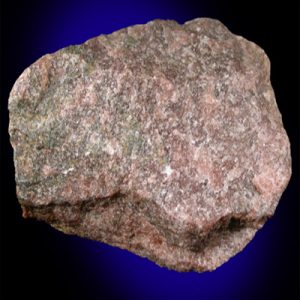Tilasite
Tilasite is a rare fluor-arsenate mineral that is a member of the Tilasite Group of minerals that also includes Durangiteamong others. Tilasite is often found as translucent reddish-brown to pale rose-red granular microcrystals in veins. It is an interesting mineral in that it is a Piezoelectric and fluorescent mineral. Piezoelectricity is the ability of some mineral crystals to generate a voltage in response to applied mechanical stress. Tilasite may fluoresce pale yellow, pale orange or dark red under SW UV light. If you place your cursor over the picture above you will see the orange fluorescence of Tilasite under shortwave UV light. Tilasite specimens found at Långban, Filipstad, Värmland, Sweden may be associated with another fluorescent arsenate mineral, Svabite.
Tilasite was named in 1895 by Stens Anders Hjalmar Sjögren in honor of Daniel Tilas (1712-1772), polymath, geologist, mining engineer, director of mines, and regional governor from Stockholm, Sweden.
Tilasite distribution: from Långban, Filipstad, Värmland, Sweden. In Switzerland, from the Falotta mine, Oberhalbstein, Graubünden, and on the west flank of Cherbadung [Pizzo Cervandone], Binntal, Valais. On the east flank of Pizzo Cervandone, Alpe Devero, Val d’Aosta, Piedmont, and at Val Strona, Ossola, Italy. From the Urupskoye copper deposit, northern Caucasus Mountains, Russia. At Sailauf, northeast of Aschaffenburg, Bavaria, Germany. From near Nežilovo, Macedonia. At Kajlidongri, Madhya Pradesh, India. From Guettera, Algeria. In the Puttapa zinc deposit, near Beltana, South Australia. In the USA, at Sterling Hill, Ogdensburg, Sussex County, New Jersey; from the White Tail Deer mine, Bisbee, Cochise County, Arizona; in the Monticello tin district, Sierra County, New Mexico.
| Chemical Formula: | CaMg(AsO4)F |
| Calcium Magnesium Arsenate Fluoride | |
| Molecular Weight: | 222.30 gm |
| Composition: | Calcium | 18.03 % | Ca | 25.23 % | CaO |
| Magnesium | 10.93 % | Mg | 18.13 % | MgO | |
| Arsenic | 33.70 % | As | 51.70 % | As2O5 | |
| Oxygen | 28.79 % | O | |||
| Fluorine | 8.55 % | F | 8.55 % | F | |
| — | — % | F | -3.60 % | -O=F2 | |
| 100.00 % | 100.00 % | = TOTAL OXIDE |
| Crystallography: | Monoclinic – Prismatic |
| Crystal Habit: | Crystals equant, may be elongated along [100], flattened on {010}, with complex domatic form development, to 3.5 cm; in subparallel groups, granular, in veinlets, massive. |
| Twinning: | On {001}, as contact twins |
| Cleavage: | Good on {101}; partings on {133}, {102}, {011} |
| Fracture: | n/a |
| Tenacity: | Brittle |
| Moh’s Hardness: | 5.0 |
| Density: | 3.75 – 3.79 (g/cm3) |
| Luminescence: | May fluoresce pale yellow, pale pinkish orange, dark red under SW UV. |
| Radioactivity: | Not Radioactive |
| Other: | Piezoelectric. Easily soluble in HCl or HNo3. |
| Health Warning: | Contains arsenic – always wash hands after handling. Avoid inhaling dust when handling or breaking. Never lick or ingest. |
| Color: | Milky white, gray, violet-gray, rose-red, olive-green, apple-green; colorless or pale green in transmitted light |
| Transparency: | Translucent |
| Luster: | Resinous, vitreous on cleavages |
| Refractive Index: | 1.640 – 1.675 Biaxial ( – ) |
| Birefringence: | 0.035 |
| Dispersion: | Relatively weak, slight; r < v |
| Pleochroism: | None |


